Nothing shouts “spring” more than the sight of newborn lambs frolicking around a field, bleating as they try to find their mother amongst the flock. Lambing times vary up and down the country, and depending on whether lambing is happening in a barn or outdoors, but for the team at the Downlands Partnership, 1st April is the start date.
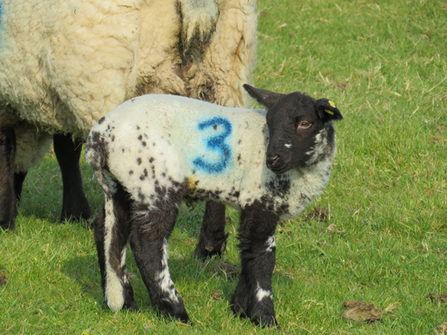
© Emma Pooley
Of course nature will do as nature pleases, so there are usually a few early lambs who sneak in during late March, but by the end of April the Downlands farm in Carshalton is full of the sounds of 80 or so lambs. These are very hardy little things, even from birth. The Partnership, run by Surrey County Council, uses sheep, cattle and goats to graze the rare chalk grassland found in parts of Croydon, Bromley and the North Downs. The breeds selected for this important task are all native, often originating from some of our harshest landscapes, making them ideal for tackling the scrubby and low nutrient vegetation that is characteristic of chalk grassland. The Partnership currently uses Herdwicks, a Lake District breed, Beulah speckled face, from the Welsh hills, plus a few Jacob and Suffolks.
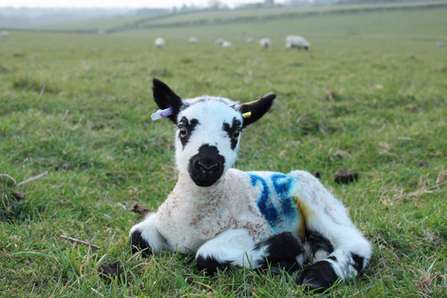
Newborn Beluh speckled-face lamb © Sean Grufferty
The sheep lamb in the fields, and the grazing team have found the ewes are more relaxed than being in a barn, there are fewer complications, a lower risk of infection after birth and the lambs are born into the environment they will be living in, making for hardy lambs from day one. The team carry out four lambing checks a day; Sunrise, Morning, Afternoon and Dusk, to check for any ewes that may be showing signs of labour and to see how the older lambs are doing. There’s a lot of hiding behind hedges with binoculars involved when doing this, so that the ewes are not disturbed too much. Once labour has started, the ewes are monitored and the team will assist if the ewe is having trouble. Sometimes the lamb is round the wrong way, or twins may be trying to both arrive at the same time and need a little help being untangled. In trickier cases the vet may need to be called out to perform a Caesarean section so that the lambs can arrive via the “side door”, but thankfully this is a rare event.
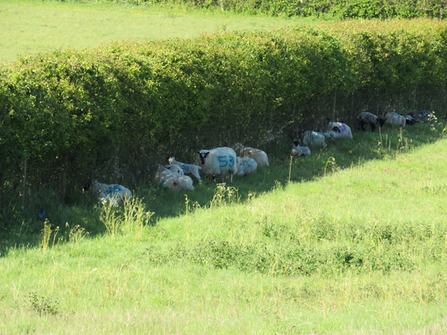
Ewes and lambs enjoying the shade of the hedge on a hot day © Emma Pooley
Once the lambs have been safely delivered they are given a moment to be cleaned up by mum before hopefully having their all important first drink of milk. Lambs are born without any antibodies, so they rely on their first milk, colostrum, from their mothers in order to survive. The team can intervene and help the lambs suckle if they are struggling, but most ewes have a strong mothering instinct and will encourage their lambs without help. Once the ewe and lamb are nicely bonded, the team will spray the naval, where the remains of the umbilical cord are, with iodine to help it dry up and to prevent nasty infection entering the lamb’s body.
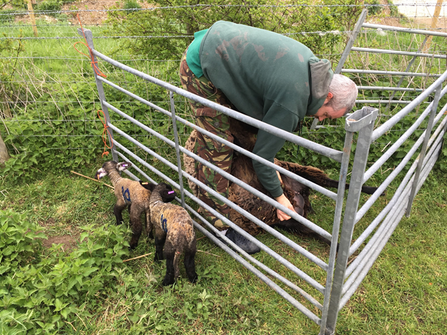
Grazing Officer Sean Grafferty checking that the ewe has enough milk for her twins © Emma Pooley
Being born is a tiring and stressful event, so the newborns are given a day or so to rest, feed and fully bond with mum, then the team carry out a few important tasks with each lamb. After checking to see what sex the lamb is, the males are castrated, a quick and simple procedure which the lambs quickly forget about, and both males and females have their tails docked. Doing this reduces the risk of the sheep getting fly strike in warm weather, which is a horrible illness that can eventually kill the sheep and can be common with the south-east climate, but the simple act of docking their tail helps to prevent it. Lastly the lambs need to be identifiable, both while they are lambs and when they are adults. Each ewe and lamb are sprayed with a matching number so that they can easily be paired up and counted when in the fields, and then the lambs are given a snazzy pair of ear tags which will be with them for life. The ear tags have the farm’s unique flock number and plus an individual number which is unique to each sheep. This allows the Government and DEFRA to track livestock movements around the country and swiftly control disease outbreaks like foot and mouth disease. Once all of these jobs are done, the lambs are back to bouncing around the field, racing the other lambs and annoying their mums.
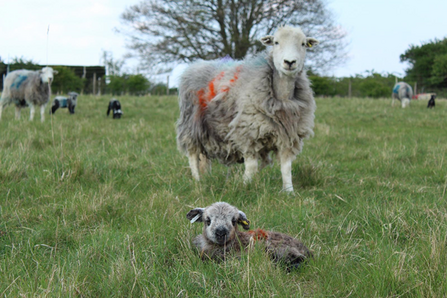
A herdwick lamb is watched by its protective mother © Sean Grufferty
The Downlands Partnership breed all of their own replacement sheep, so females are kept for the breeding flock and the males will join the “flying flock” that move between the chalk grassland conservation sites. If you would like to see some of the flock in action, you can find them grazing at Hutchinson’s Bank and Saltbox Hill all year round. But please be responsible by staying out of the paddock and keeping all dogs on a lead.
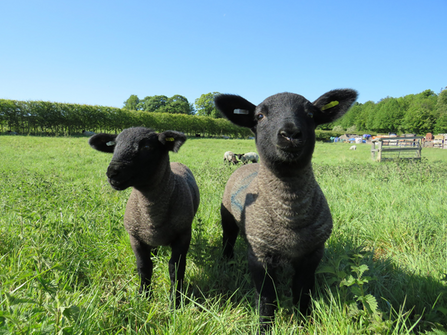
One month old Suffolk twins curiously checking out the photographer © Emma Pooley

